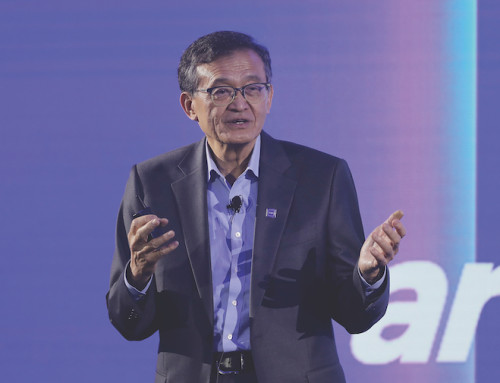WASHINGTON (AP) — President Donald Trump last week announced the federal government has secured a 10 percent stake in Silicon Valley pioneer Intel in a deal that was completed.
“The United States of America now fully owns and controls 10 percent of INTEL, a Great American Company that has an even more incredible future,” Trump wrote in a post.
The federal government is getting the stake through the conversion of $11.1 billion in previously issued funds and pledges.
All told, the government is getting 433.3 million shares of non-voting stock priced at $20.47 apiece — a discount from Friday’s closing price at $24.80. That spread means the federal government already has a gain of $1.9 billion, on paper.
The turn of events makes the federal government one of Intel’s largest shareholders at a time that the Santa Clara, Calif., company is in the process of jettisoning more than 20,000 workers as part of its latest attempt to bounce back from years of missteps taken under a variety of CEOs.
Intel’s current CEO, Lip-Bu Tan, has only been on the job for slightly more than five months and earlier this month it looked like he might be on shaky ground already after some lawmakers raised national security concerns about his past investments in Chinese companies while he was a venture capitalist. Trump latched on to those concerns in an Aug. 7 post demanding that Tan resign.
Trump backed off after the Malaysian-born Tan professed his allegiance to the United States in a public letter to Intel employees and went to the White House to meet with the president, leading to a deal that now has the federal government betting that the company is on the comeback trail after losing more than $22 billion since the end of 2023. Trump hailed Tan as “highly respected” CEO in his post last week.
In a statement, Tan applauded Trump for “driving historic investments in a vital industry” and resolved to reward his faith in Intel. “We are grateful for the confidence the President and the Administration have placed in Intel, and we look forward to working to advance U.S. technology and manufacturing leadership,” Tan said.
Intel’s current stock price is just slightly above where it was when Tan was hired in March and more than 60 percent below its peak of about $75 reached 25 years ago when its chips were still dominating the personal computer boom before being undercut by a shift to smartphones a few years later.
The company’s market value currently stands at about $108 billion — a fraction of the current chip kingpin, Nvidia, which is valued at $4.3 trillion.
The stake is coming primarily through federal government grants to Intel through the CHIPS and Science Act that was started under President Joe Biden’s administration as a way to foster more domestic manufacturing of computer chips to lessen the dependence on overseas factories.
The Trump administration, however, saw the CHIPs act as a needless giveaway and is now hoping to make a profit off the funding that had been pledged to Intel.
“We think America should get the benefit of the bargain,” U.S. Commerce Secretary Howard Lutnick said earlier this week. “It’s obvious that it’s the right move to make.”
About $7.8 billion had been pledged to Intel under the incentives program, but only $2.2 billion had been funded so far. Another $3.2 billion of the government investment is coming through the funds from another program called “Secure Enclave.”
Although the government can’t vote with its shares and won’t have a seat on Intel’s board of directors, critics of the deal view it as a troubling cross-pollination between the public and private sectors that could hurt the tech industry in a variety of ways.








